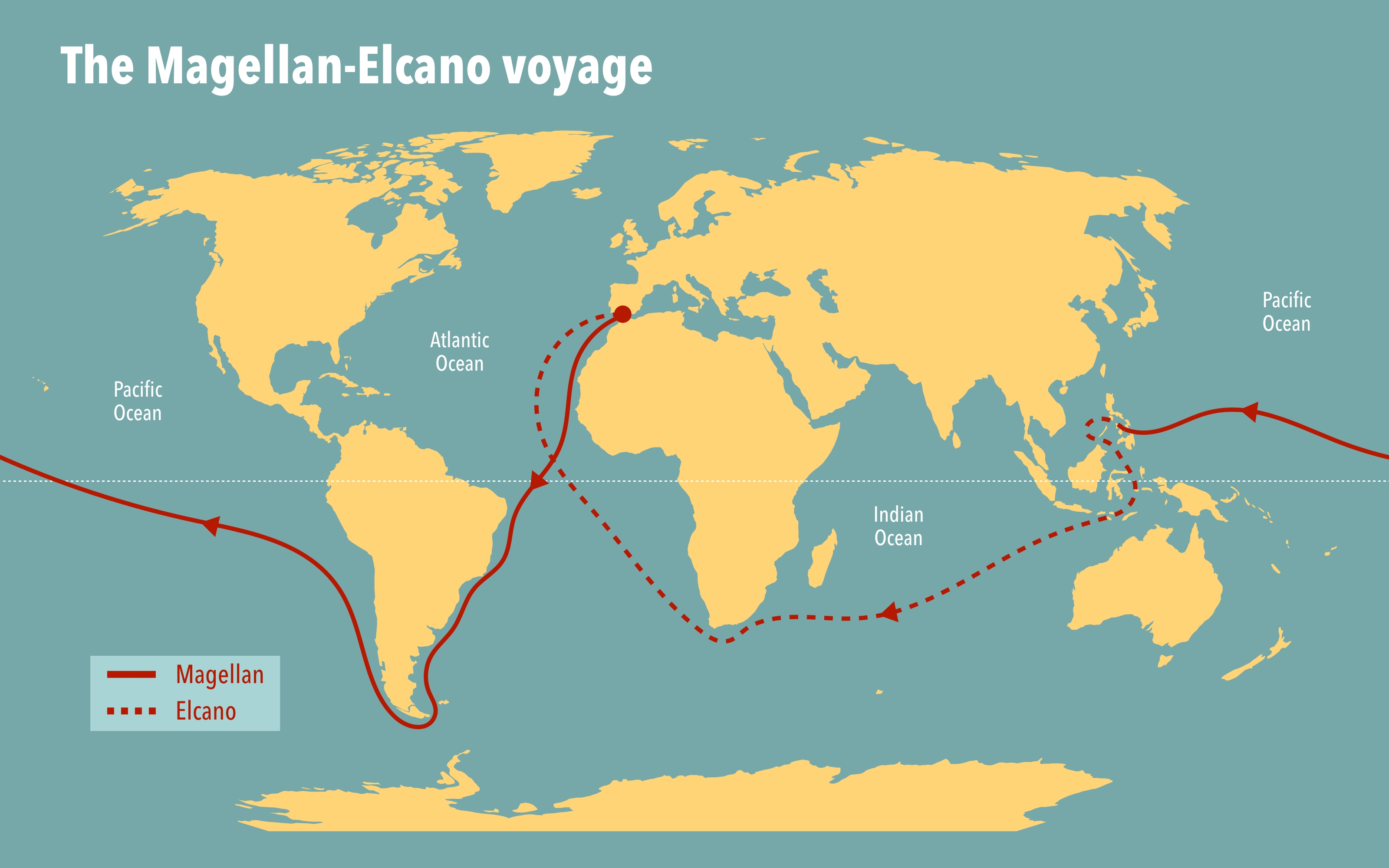The 1519–22 expedition to circumnavigate the planet by sailing from the Atlantic to the Pacific via the tip of South America has been described by historians as “the greatest” and “most significant” sea voyage ever undertaken – and it’s easy to see why.
The Portuguese explorer Ferdinand Magellan is often credited as being the first person to successfully complete the feat, but that title is not uncontested. In fact, one of the very first people to circumnavigate the globe may have been an enslaved man born in Southeast Asia, known as Enrique of Malacca.
The Strait of Magellan is a 570-kilometer (350-mile) long navigable sea route in the Magallanes Region of southern Chile that winds through an obstacle field of rugged islands and icebergs.
Its modern-day name comes from the first known European to command a voyage through the passage, Ferdinand Magellan. Between 1519 and 1522, the Portuguese explorer led a Spanish expedition to circumnavigate the globe – although his untimely death prevented him from completing the journey himself.
In 1519, he and his crew set sail from Sanlúcar de Barrameda in southern Spain across the Atlantic Ocean. Upon reaching the southernmost tip of the Americas, the expedition performed the first European navigation to Asia via the Pacific.
This was made possible after discovering a natural connection between the Atlantic and Pacific Oceans, what we now call the Strait of Magellan. So the story goes, they initially mistook it for just another large bay, similar to those they had previously encountered. To confirm whether it was a strait, Magellan dispatched two ships with clear instructions to return within five days. Just as Magellan was about to depart on the fifth day, the two ships reappeared, reporting that the waterway was indeed a strait.
After 33 days, the Magellan expedition had made it through the Americas to the “new” sea, which Magellan renamed the Mar Pacifico. However, a new problem had emerged: just like many Europeans at the time, Magellan massively underestimated the size of the Pacific and the distance between the Americas and Asia.

The sea route of the 1519–22 Magellan–Elcano expedition.
Image credit: Dimitrios Karamitros/Shutterstock.com
The voyagers were expecting to find a calm sea, dotted with beautiful islands abundant in food and riches, but they were faced with the vast and largely uncharted ocean. As they traversed the Pacific, the crew endured three months of sailing without finding land, leading to extreme hunger, scurvy, and other illnesses due to the lack of fresh food and water. Rough seas and stormy weather deepened their troubles.
The crew had grown to despise Magellan even before this bout of hardship. Not only was the Spanish crew resentful of being led by a Portuguese captain, but he was also a prickly character and a domineering boss.
After passing over the island of Guam, they eventually reached the Philippines. Armed with his inflated ego, Magellan claimed the land as Spanish and had dreams of establishing himself as a grand official for one of the Philippine islands, enriching himself with the region’s spices.
This arrogant aspiration ultimately led to his death. In 1521, Magellan was killed during the Battle of Mactan when his crew and a small band of local allies led an effort to topple Lapulapu, the chieftain of the island. The depleted crew was then led to Spain by Juan Sebastián Elcano, finally returning in 1522.
Part of the reason why Magellan was able to forge alliances with some local leaders was thanks to a crewmember called Enrique, an enslaved man Magellan had purchased before the journey, who could understand parts of the Indigenous people’s language.
Enrique’s origins are uncertain, but he is believed to have been born in Southeast Asia, possibly in the Malay Archipelago or Sumatra. It is thought that Magellan bought him in Malacca, a city in modern-day Malaysia, during a previous expedition to the region in 1511. Enrique accompanied Magellan back to Europe and continued to serve him until joining the crew of the Magellan expedition in 1519.
This journey suggests that by 1521, Enrique had effectively circumnavigated the globe, having traveled from his homeland to Europe and back to Southeast Asia. While Magellan had also made a similar journey, he did not complete the final leg to return to his original homeland, leaving Enrique as a unique candidate for this distinction.
Bear in mind, that all of this is up for debate and interpretation. Much of Enrique’s claim depends on whether his place of origin can be considered accurate, plus whether his journeys before joining Magellan are considered part of the circumnavigation effort.
Nevertheless, the unlikely story highlights how historical narratives are rarely as they first seem and underscores the often-untold roles played by non-European people in the exploration of the world.
Source Link: Did An Unsung Hero Complete The First Atlantic To Pacific Circling Of The Globe?